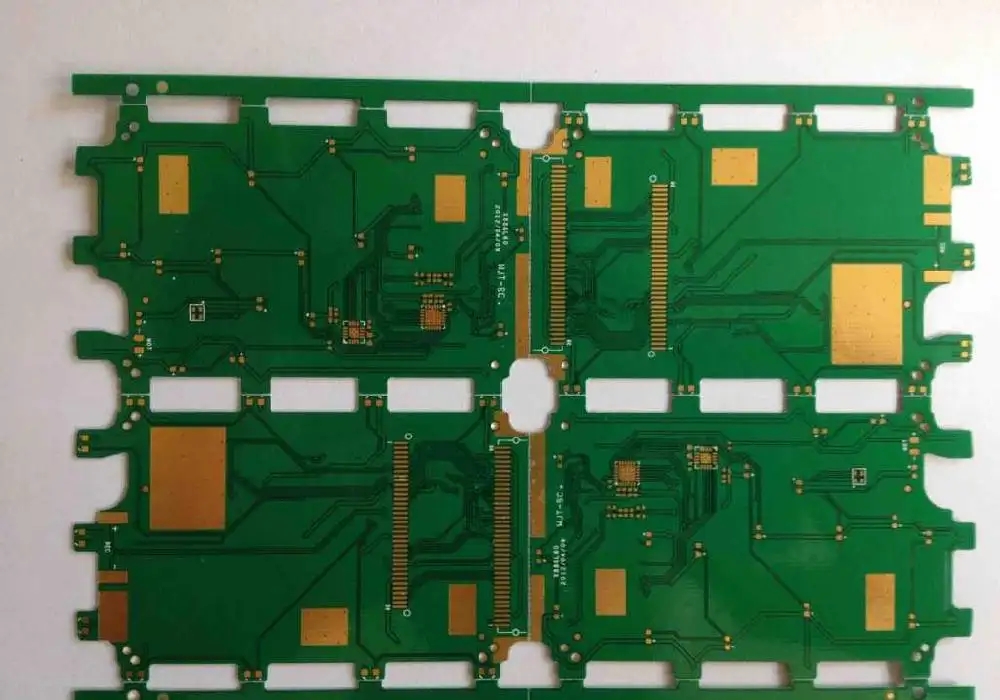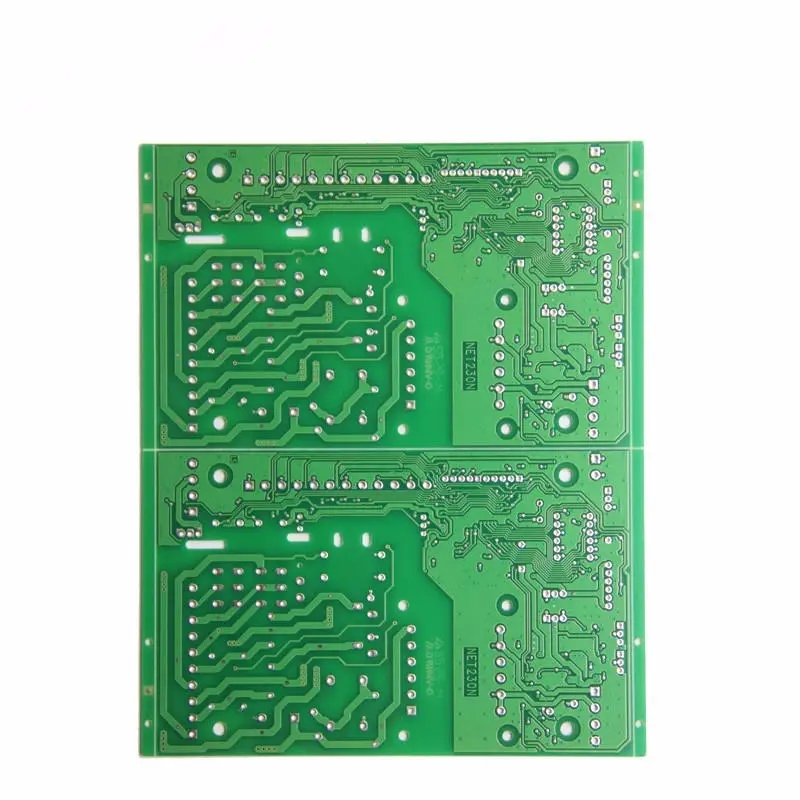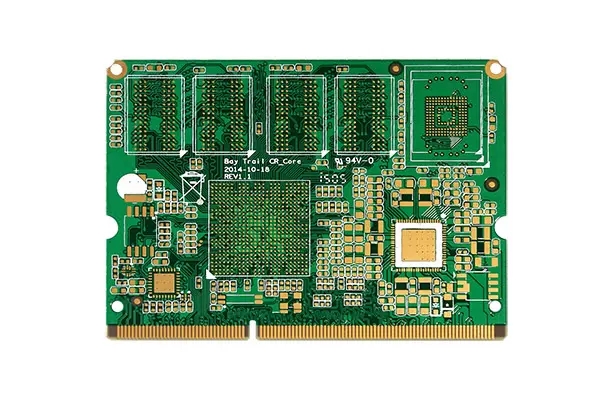
Introduction to PCB Nickel Electroplating Process and Troubleshooting
PCB manufacturing, PCB design, PCBA processing manufacturer will explain PCB nickel plating process introduction and troubleshooting
Functions and characteristics
On PCB, nickel is used as the substrate coating of precious metal and base metal, and for some single-sided printed boards, nickel is also commonly used as the surface layer. For some surfaces worn under heavy load, such as switch contacts, contact pieces or plug gold, nickel can be used as the substrate coating of gold, which can greatly improve the wear resistance. When used as a barrier layer, nickel can effectively prevent the diffusion between copper and other metals. The dumb nickel/gold composite coating is often used as the anti etching metal coating, and can meet the requirements of hot pressure welding and brazing. Only nickel can be used as the anti etching coating containing ammonia etchant, and the PCB that does not need hot pressure welding and requires bright coating usually uses the smooth nickel/gold coating. The thickness of nickel coating is generally not less than 2.5 microns, usually 4-5 microns.
The deposition layer of low stress nickel on PCB is usually prepared by using modified Watt nickel plating solution and some sulfamic nickel plating solutions with stress reducing additives.
We often say that PCB nickel plating has bright nickel and dumb nickel (also known as low stress nickel or semi bright nickel), which usually requires the coating to be uniform and fine, with low porosity, low stress and good ductility.
Nickel sulfamate
Nickel sulfamate is widely used as the substrate coating on metallized hole electroplating and printed plug contact sheet. The obtained deposit layer has low internal stress, high hardness and excellent ductility. When a stress remover is added to the plating solution, the resulting coating will be slightly stressed. Nickel sulfamate is widely used because of its low stress, but its stability is poor and its cost is relatively high.
Modified Watt Nickel (Nickel Sulphide)
The modified Watt nickel formula uses nickel sulfate with the addition of nickel bromide or nickel chloride. Because of internal stress, nickel bromide is mostly used. It can produce a semi bright coating with a little internal stress and good ductility; And this kind of coating is easy to activate for subsequent electroplating, and the cost is relatively low.
Effect of each component of plating solution
The main salts nickel sulfamate and nickel sulfate are the main salts in the nickel bath. The nickel salt is mainly used to provide nickel metal ions required for nickel plating and also plays the role of conductive salt. The concentration of nickel plating solution varies slightly with different suppliers, and the allowable content of nickel salt varies greatly. With high nickel salt content, high cathode current density can be used, and the deposition speed is fast. It is commonly used for high-speed thick nickel plating. However, if the concentration is too high, the cathodic polarization will be reduced, the dispersion ability will be poor, and the loss of the bath will be large. With low nickel salt content, the deposition rate is low, but the dispersion ability is good, and the crystal fine bright coating can be obtained.
Buffer boric acid is used as a buffer to maintain the pH of nickel plating solution within a certain range. Practice has proved that when the pH value of nickel plating solution is too low, the cathode current efficiency will drop; When the PH value is too high, due to the continuous precipitation of H2, the PH value of the liquid layer near the cathode surface rapidly increases, leading to the formation of Ni (OH) 2 colloid. The inclusion of Ni (OH) 2 in the coating increases the brittleness of the coating. At the same time, the adsorption of Ni (OH) 2 colloid on the electrode surface will also cause the retention of hydrogen bubbles on the electrode surface, which increases the porosity of the coating. Boric acid can not only buffer PH, but also improve cathodic polarization, thereby improving the performance of the bath and reducing the "scorching" phenomenon under high current density. The presence of boric acid is also conducive to improving the mechanical properties of the coating.
Anode activator - soluble anodes are used for other types of nickel plating processes, except for sulfate type nickel plating solutions which use insoluble anodes. The nickel anode is easy to be passivated during the electrification process. In order to ensure the normal dissolution of the anode, a certain amount of anode activator is added to the plating solution. It is found that CI chloride ion is the best nickel anode activator. In nickel plating bath containing nickel chloride, nickel chloride acts as anode activator in addition to being the main salt and conductive salt. A certain amount of sodium chloride shall be added to the nickel plating solution without nickel chloride or with low nickel chloride content according to actual conditions. Nickel bromide or nickel chloride is also often used as a stress remover to maintain the internal stress of the coating and give the coating a semi bright appearance.

Additive - The main component of the additive is the stress relieving agent. The addition of the stress relieving agent improves the cathodic polarization of the plating solution and reduces the internal stress of the coating. With the change of the concentration of the stress relieving agent, the internal stress of the coating can be changed from tensile stress to compressive stress. Common additives include naphthalene sulfonic acid, p-toluenesulfonamide, saccharin, etc. Compared with the nickel coating without the stress remover, the nickel coating with the stress remover added to the plating solution will be uniform, fine and semi bright. Generally, the stress relief agent is added according to the ampere hour (the current general combination of special additives includes anti pinhole agent, etc.).
Wetting agent hydrogen evolution on the cathode is inevitable during electroplating. Hydrogen evolution not only reduces the cathodic current efficiency, but also causes pinholes in the coating due to the retention of hydrogen bubbles on the electrode surface. The porosity of nickel plating layer is relatively high. In order to reduce or prevent pinholes, a small amount of wetting agent, such as sodium dodecyl sulfate, sodium diethylhexyl sulfate, sodium n-octyl sulfate, etc., should be added to the plating solution. It is an anionic surfactant that can be adsorbed on the cathode surface, reducing the interfacial tension between the electrode and the solution, and reducing the wetting contact angle of hydrogen bubbles on the electrode, Thus, the bubbles can easily leave the electrode surface, preventing or reducing the generation of pinholes in the coating.
Bath maintenance
1、 Temperature - different nickel processes use different bath temperatures. The influence of temperature change on nickel plating process is complex. In the high temperature nickel plating bath, the nickel coating obtained has low internal stress and good ductility. When the temperature is increased to 50 ° C, the internal stress of the coating is stable. Generally, the operating temperature is maintained at 55-60 ℃. If the temperature is too high, nickel salt hydrolysis will occur, and the generated nickel hydroxide colloid will retain colloidal hydrogen bubbles, causing pinholes in the coating and reducing cathodic polarization. Therefore, the working temperature is very strict and should be controlled within the specified range. In actual work, the room temperature controller is used to maintain the stability of its working temperature according to the optimal temperature control value provided by the supplier.
2、 PH value - The practice results show that the PH value of nickel plating electrolyte has a great influence on the coating performance and electrolyte performance. In strong acid electroplating solution with PH ≤ 2, there is no nickel deposition, but light gas is precipitated. Generally, the PH value of PCB nickel plating electrolyte is maintained between 3-4. The nickel plating solution with higher PH value has higher dispersion force and higher cathode current efficiency. However, when the PH is too high, the PH value of the coating near the cathode surface will rise rapidly due to the continuous precipitation of light gas from the cathode during the electroplating process. When the PH is greater than 6, there will be light nickel oxide colloid, which will cause hydrogen bubbles to stay and make the coating appear pinholes. The inclusion of nickel hydroxide in the coating will also increase the brittleness of the coating. The nickel plating solution with low PH has good anodic dissolution, which can increase the nickel salt content in the electrolyte and allow the use of higher current density, thus strengthening production. However, if PH is too low, the temperature range of bright coating will be narrowed. When nickel carbonate or basic nickel carbonate is added, the PH value increases; Add aminosulfonic acid or sulfuric acid to reduce the PH value, and check and adjust the PH value every four hours during operation.
3、 Anode - Soluble anode is used for conventional nickel plating on PCB, and it is quite common to use titanium basket as the anode inner nickel angle. The advantage is that the anode area can be large enough without change, and the anode maintenance is relatively simple. The titanium basket shall be put into the anode bag woven of polypropylene material to prevent the anode mud from falling into the plating solution. Regularly clean and check whether the hole is unblocked. The new anode bag shall be soaked in boiling water before use.
4、 Purification - When there is organic pollution in the bath, it should be treated with activated carbon. However, this method usually removes part of the stress remover (additive), which must be supplemented. The treatment process is as follows:;
1. Take out the anode, add 5ml/l of impurity removal water, heat (60-80 ° C) and blow air (air stirring) for 2 hours.
2. When there are many organic impurities, 30% hydrogen peroxide of 3-5 ml/lr shall be added for treatment, and the gas shall be stirred for 3 hours.
3. Add 3-5 g/l powdered activity under continuous stirring, continue to stir with air for 2 hours, turn off the stirring and stand for 4 hours, add filter aids and use the standby tank to filter and clean the tank.
4. Hang back the anode for cleaning and maintenance, use the nickel plated corrugated iron plate as the cathode, and drag the cylinder for 8-12 hours under the current density of 0.5-0.1 A/dm2 (also often used when there is inorganic pollution in the plating solution that affects the quality)
5. Change the filter element (generally, a group of cotton cores and a group of carbon cores are used for continuous filtration in series, and the periodic replacement can effectively delay the large treatment time and improve the stability of the plating solution), analyze and adjust various parameters, and add additive wetting agent to test the plating.
5、 Analysis - The bath should use the key points of the process procedure specified by the process control to regularly analyze the bath composition and Hull cell test, and guide the production department to adjust the bath parameters according to the obtained parameters.
6、 Stirring - Like other electroplating processes, the purpose of stirring is to accelerate the mass transfer process, reduce the concentration change and increase the upper limit of allowable current density. Another very important role of stirring the plating solution is to reduce or prevent pinholes in the nickel plating layer. Because, in the electroplating process, the plating ions near the cathode surface are poor, and a large amount of hydrogen is released, which increases the PH value and produces nickel hydroxide colloid, resulting in the retention of hydrogen bubbles and the formation of pinholes. The above phenomena can be eliminated by strengthening the stirring of the residual plating solution. Compressed air, cathode movement and forced circulation (combined with carbon core and cotton core filtration) are commonly used for mixing.
7、 Cathode current density Cathode current density has an effect on cathode current efficiency, deposition rate and coating quality. The results show that the cathodic current efficiency increases with the increase of current density in the low current density region when nickel is plated with electrolyte with lower PH; In the area of high current density, the cathodic current efficiency is independent of current density, while when nickel electroplating solution with high PH is used, the cathodic current efficiency has little relationship with current density.
As with other plating types, the range of cathode current density selected for nickel plating should also depend on the composition, temperature and stirring conditions of the plating solution. Due to the large area of PCB assembly, the current density in the high current area differs greatly from that in the low current area. Generally, 2A/dm2 is appropriate.
Fault causes and troubleshooting
1、 Ma Hang: Ma Hang is the result of organic pollution. Large pits usually indicate oil pollution. If the mixing is not good, the bubbles cannot be expelled, which will form pockmarks. Wetting agent can be used to reduce its influence. We usually call small pits pinholes. Pinholes will be produced if the treatment is poor, there are metal impurities, boric acid content is too little, and the bath temperature is too low. Bath maintenance and process control are key, and anti pinhole agent shall be used as process stabilizer to supplement.
2、 Roughness and burr: Roughness indicates that the solution is dirty, which can be corrected by adequate filtration (if the PH is too high, it is easy to form hydroxide precipitation, which should be controlled). If the current density is too high, impurities are brought into the anode mud and impure added water, which will cause roughness and burrs in serious cases.
3、 Low adhesion: if the copper coating is not fully oxidized, the coating will peel off, and the adhesion between copper and nickel is poor. If the current is interrupted, the nickel coating will peel off itself at the interruption point. If the temperature is too low, it will peel off even in severe cases.
4、 Brittleness and poor solderability of the coating: when the coating is bent or worn to some extent, the coating brittleness is usually exposed. This indicates that there is organic matter or heavy metal pollution. Excessive additives, entrained organic matter and electroplating corrosion inhibitor are the main sources of organic matter pollution, which must be treated with activated carbon. Insufficient additives and high PH will also affect the brittleness of the coating.
5、 Coating darkening and uneven color: coating darkening and uneven color indicate metal pollution. Since copper plating is generally followed by nickel plating, the copper solution brought in is the main pollution source. It is important to minimize the copper solution on the hanger. In order to remove the metal pollution in the tank, especially the copper removal solution, the corrugated steel cathode should be used. Under the current density of 2~5 A/square foot, 5 amperes per gallon of solution should be empty plated for one hour. Poor pretreatment, poor low coating, too low current density, too low concentration of main salt, and poor contact of electroplating power circuit will affect the coating color.
6、 Coating burn: Possible causes of coating burn: insufficient boric acid, low concentration of metal salt, low working temperature, high current density, high PH or insufficient stirring.
7、 Low deposition rate: low pH value or low current density will cause low deposition rate.
8、 Blistering or peeling of the coating: blistering or peeling will occur in case of poor pre-treatment, too long interruption time, organic impurity pollution, too high current density, too low temperature, too high or too low PH, and serious influence of impurities.
9、 Anode passivation: the anode activator is insufficient, the anode area is too small, and the current density is too high.
PCB manufacturers, PCB designers, and PCBA processors will explain PCB nickel plating process introduction and troubleshooting.







